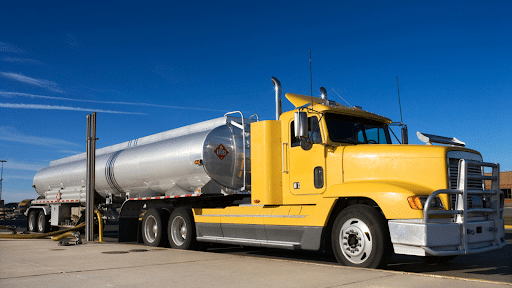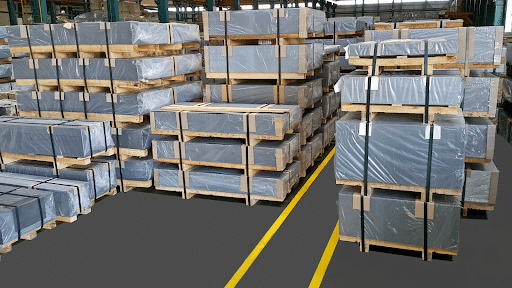Did you know that in the United States alone, around 1.1 billion barrels of diesel can be consumed in a single year? This amounts to around 8.05 million barrels per day.
If you’re responsible for managing a large fleet of trucks that makes hundreds of deliveries per day, fuel efficiency is likely a high priority. The more that you’re able to help your company save on fuel costs, the bigger your company’s profits will be.
What most dispatchers don’t realize is that there is transportation management software (TMS) available that can improve fleet fuel management, eliminate wasted miles, and even lower their company’s fuel costs through optimized routing and load planning.
Read on to learn some of the ways that transportation management software can also double as an efficient fleet fuel management system for your company.
1. Route Optimizer Software Helps Avoid Traffic Delays
Fleet fuel management and route planning is a never-ending puzzle when done without route optimizing software. Oftentimes, experienced dispatchers rely on their own intuition and “traditional” methods (stacks of paper, outdated excel sheets, and sticky notes!) to complete this puzzle.
There are many complicated factors that impact effective load and route planning, including weather, traffic delays, loading or unloading constraints, customer equipment needs, vehicle capacities, route times, hours of service, and much, much more. Creating optimized routes that eliminate wasted fuel while addressing all of these important criteria through experience and intuition alone is not realistic; dispatchers need a routing and load planning tool to make it happen.
Regardless of how much experience any dispatcher has with planning routes for a large fleet of trucks, trying to plan routes without technology opens up the door for human error and missed opportunities for savings. Even a single truck on an inefficient route can waste fuel and cause inefficiency that leaks down to the bottom line.
This is where route optimizer software steps in to save the day for dispatchers.
The best TMS software packages include route optimization algorithms that are powered by artificial intelligence. These systems automatically compute the most efficient routes for large fleets. This saves time and helps remove the risk of human error in route planning.
Route automation lets the power of artificial intelligence sort through all the possible routes for your entire fleet at the click of a button, helping you determine which routes will save the most time and fuel. This eliminates unnecessary miles for your fleet, excess fuel consumption, and gets deliveries to customers on time.
2. Automated Load Planning For More Efficient Deliveries
Incorrect or poorly planned loadings mean that you will waste fuel through wasted time at delivery stops and using more vehicles than necessary to accomplish your routes.
There are many ways that dispatchers can combine orders and products onto their fleet’s vehicles. Similar to route planning, the most efficient methods can be challenging to figure out manually.
For example, say you are required to make a delivery of hazardous waste or multiple hazmat materials to the same customer. Instead of taking time trying to track down how many available tankers you have and what materials can be combined, TMS software can help you figure out the best load plan that combines allowable products at the click of a button.
The result? Instead of using three tankers and a lot more fuel to transport the three separate hazardous materials to the same customer, you’re able to use one tanker to transport all three of the hazardous materials because your TMS software notified you that those three regulated materials are able to be combined in the same tanker or load.
Through this real-world scenario with load planning, it’s clear to see that there are plenty of fuel savings to be experienced when dispatchers have TMS software in their arsenal that also serves as an effective fleet fuel management system.
To take it a step further, there are TMS software solutions like Headlight that will tell you the best ways to combine orders when putting them onto your vehicles. It will compare truck weights and cargo sizes to maximize space, as well as weights to ensure that vehicles are utilized in the most efficient manner possible.
3. GPS Truck Fleet Tracking Holds Drivers Accountable
Another key feature that TMS software generally includes for dispatchers is a GPS fleet tracking system. GPS fleet tracking helps dispatchers have real-time visibility on all drivers and assets.
Route performance and out-of-route mileage are key performance indicators (KPIs) that affect fuel consumption that can – and should – be monitored in real-time through GPS fleet tracking.
Many fuel inefficiencies within transportation fleets are directly caused by driver behavior. One such behavior is speeding: driving over 50 mph on a highway can decrease a vehicle’s fuel economy by 7% for every additional 5 mph. Also, drivers (without reason) may go off-route and use more fuel than was planned for a particular transport.
Some drivers also leave their engines idling, which consumes fuel at a rate of a gallon per hour. They may do this for several reasons — including loading and unloading cargo or resting inside the vehicle.
With streamlined fleet tracking software, you can easily monitor drivers and deliveries in real-time. As a result, you’re able to check on drivers, hold them more accountable to the jobs they were hired for, and ensure less out-of-route mileage for your fleet.
It’s clear to see that GPS tracking also helps TMS software double as a fleet fuel management system for dispatchers and carriers, but it doesn’t end there.
4. Quicker Communication for Unplanned Situations
Traditionally, dispatchers need to look through tall stacks of paper or files to hunt down contact information for drivers in case of customer emergencies or traffic delays that arise.
With a TMS software in place that conveniently stores contact information in the cloud or allows dispatchers to communicate with drivers through their onboard tablets, dispatchers can quickly pinpoint contact information for any driver or employee in order to communicate new updates or changes in a particular transport or delivery.
For example, if a driver is en route to the next delivery stop but isn’t aware of a new weather delay in 100 miles, the dispatcher can quickly pick up the alert and contact the driver to let them know. Easier communication helps drivers quickly adjust to changing environments. The result? Less fuel consumed in the long run.
Fortunately, using a transportation management system, dispatch can be automated with modern tools. Headlight’s product features a dispatch console that lets dispatchers see all movements of product and vehicles, visualize orders, transfers, automate route planning and optimization, connect with drivers, track trucks in real-time, and more to ensure that high-quality dispatching and better fleet fuel management is the only path forward.
Invest In TMS Software That Can Serve As An Efficient Fleet Fuel Management System Too
While optimizing your fleet can be a challenge, managing its fuel will make you more efficient. Now that you know some of the ways that TMS software can double up as a fleet fuel management system, you can start looking at ways to take your company to the next level when it comes to logistics and fleet management.
At Headlight, we provide all of the benefits mentioned above with our TMS software, and we’re committed to building upon your fleet’s success.
Request a demo with our expert team to help answer any remaining questions that you have about improving your fleet’s capabilities with our software. We are in your corner when you’re ready to take the next step.




